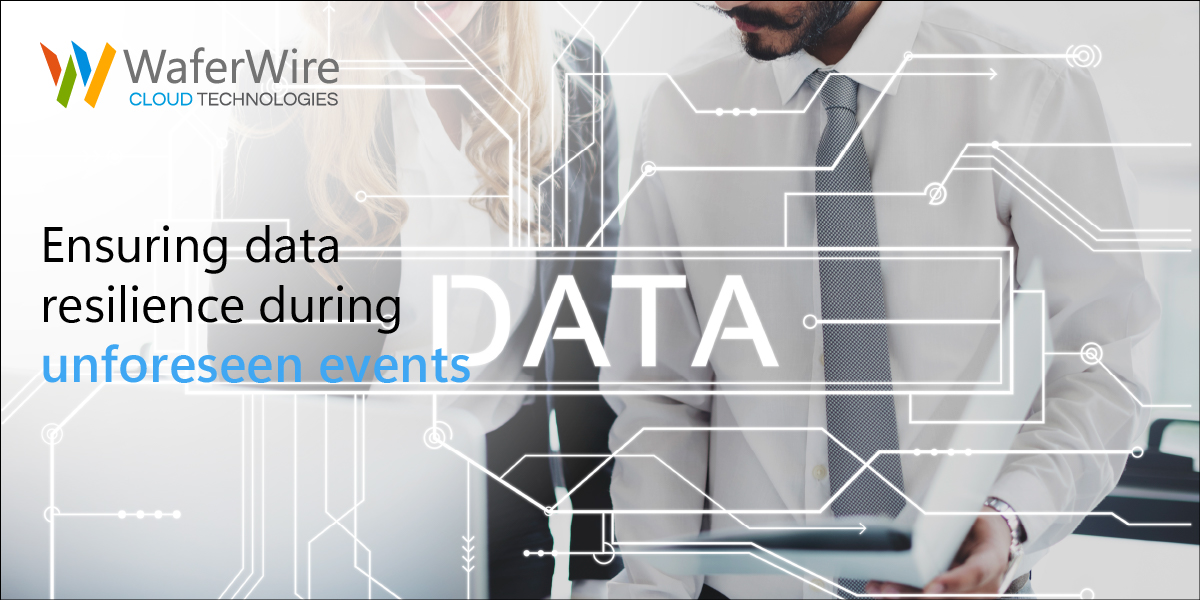Imagine a regional hospital faced with a sudden power outage due to a storm. In such a scenario, patient data access and critical systems are at risk. It’s not just a matter of inconvenience; lives are at stake. The ability to access and utilize data underpins the very survival of healthcare facilities.
But do you think only healthcare needs to assure data resilience?
Organizations from multiple industries face a myriad of unforeseen events, from natural disasters to cyberattacks, that can disrupt their data and operations. It’s in these moments of crisis that the importance of resilient data becomes abundantly clear. By ensuring data resiliency for your enterprise, you guarantee:
- Operational continuity even during adversity.
- Operational and financial risk mitigation by safeguarding data against unforeseen events
- Trust and reputation by maintaining data integrity in the face of adversity.
Relevant StatisticsSome relevant statistics related to organizations facing unforeseen events and data disruptions:
|
These statistics underscore the critical need for organizations to enhance their data resilience strategies, with AI playing a pivotal role in mitigating the impact of unforeseen events on data and operations.
What is AI’s role in data resiliency?
- Predictive analytics: AI can forecast potential disruptions. For instance, machine learning models can predict when a power outage is likely to occur based on weather conditions. Hospitals can then switch to backup power before the storm hits.
For example, imagine a utility company that uses AI in predictive analytics to monitor its power grid. By analyzing historical weather data and the current atmospheric conditions, the AI system predicts that a severe storm is approaching. The company received a warning that there is a high probability of power outages due to fallen trees and damaged power lines. With this advance notice, the utility company can proactively allocate repair teams and equipment to the affected areas, reducing downtime and minimizing the impact on customers.
- Real-time monitoring: AI-driven sensors and monitoring systems can detect anomalies in data access or system behavior, flagging potential issues before they become critical.
For example, consider an e-commerce platform that employs AI-driven real-time monitoring. The system continuously tracks user activity, website performance, and transaction data. If there’s an unusual surge in traffic or a sudden increase in failed transactions, the AI system detects these anomalies and immediately alerts the IT team. This rapid response allows them to identify and resolve the issue before it escalates, ensuring a seamless shopping experience for customers.
- Automated data backup and recovery: AI-driven backup solutions can ensure data redundancy. When a cyberattack compromises data, AI can swiftly recover the unaffected, backed-up data, minimizing downtime.
For example, picture a financial institution that uses AI-driven data backup and recovery solutions. In case of a cyberattack targeting customer account information, AI algorithms swiftly identify the breach and isolate the compromised data. Simultaneously, the system activates automated backup mechanisms, restoring the unaffected customer data from secure backups. This process occurs in minutes, significantly reducing the downtime and potential data loss associated with the attack.
- Disaster recovery plan: AI algorithms can help organizations create and optimize disaster recovery plans. They can simulate different scenarios and recommend the most effective response.
For example, think of a manufacturing company that relies on AI for disaster recovery planning. Using AI algorithms, the company simulates various disaster scenarios, such as a fire in its main production facility. The AI system evaluates different responses, including evacuation procedures, resource allocation, and communication protocols. After running simulations, the AI recommends an optimal disaster recovery plan that helps the company respond efficiently and minimize disruptions in the event of a fire or similar catastrophe.
How can you implement AI for data resilience?
- Data assessment: Organizations must evaluate their data assets and identify critical data. This guides the AI strategy for resilience.
- AI integration: Implement AI-driven monitoring and predictive tools, coupled with robust backup and recovery systems.
- Employee training: Ensure your team understands AI-driven data resilience strategies and knows how to respond during an unforeseen event.
- Regular testing: Continuously test and refine your data resilience plan. AI can help automate this process, ensuring it is always up to date.
To summarize, data resilience isn’t an option; it’s a necessity for surviving unforeseen events. AI empowers organizations to predict, detect, and recover from such events efficiently. By implementing AI strategies for data resilience, organizations can ensure business continuity, safeguard their reputation, and, most importantly, protect lives.
As you contemplate your organization’s data resilience strategy, remember that AI is your ally in the face of the unforeseen. Start by assessing your data, explore AI solutions, and ensure your team is well-prepared for any eventuality. Your data resilience can mean the difference between success and catastrophe.
